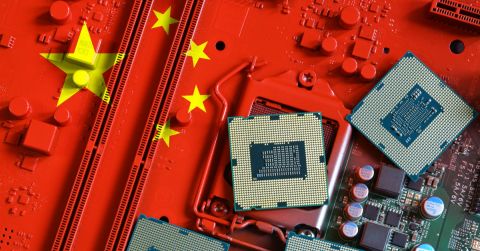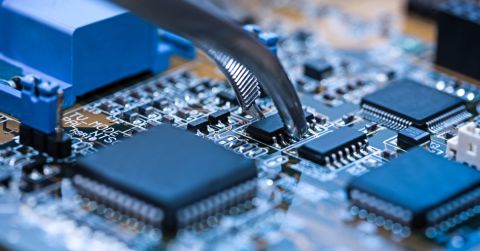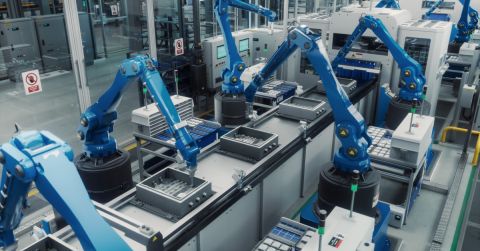Energy Harvesting Devices Add the Re-Introduction of Power for Devices
Energy harvesting stands at the forefront of a significant transition in powering small electronic devices. This methodology captures ambient energy to extend battery life or potentially eliminate batteries altogether. The approach brings particular value to wearables, IoT devices, and compact PCB systems, representing a shift toward greater sustainability and functionality.
In the evolving landscape of small electronics, energy harvesting emerges as a solution to fundamental power challenges. Traditional batteries present inherent limitations—finite lifespan and environmental concerns upon disposal. Energy harvesting addresses these issues by utilizing ambient energy sources, creating pathways for continuous power in small electronic devices.
Applications Benefiting from Energy Harvesting
Wearable Devices
Smartwatches, fitness trackers, and health monitors can utilize body heat or motion to power their functions. These devices present ideal applications for energy harvesting due to their consistent exposure to thermal and kinetic energy sources.

IoT Devices
Environmental sensors, smart home systems, and industrial monitors can harvest energy from light, vibrations, or RF signals to operate autonomously. This capability proves especially valuable for sensors deployed in remote locations where battery replacement presents logistical challenges.

Small PCB Devices
Remote controls, wireless keyboards, and compact medical devices can benefit from energy harvesting to reduce or eliminate battery dependency. For these applications, energy harvesting significantly extends operational life and reduces maintenance requirements.
Primary Energy Harvesting Methods
The field of energy harvesting demonstrates consistent technological advancement, with each method showing improvements in efficiency and practical application. But what exactly are the different ways of harvesting energy? Let’s break these down:
Solar Energy Harvesting

Solar Energy Harvesting uses photovoltaic cells to convert light into electrical energy. Solar cells represent one of the more mature energy harvesting technologies, showing high efficiency even in indoor lighting conditions.
Applications for Solar Energy Harvesting: This type of energy harvesting method is suitable for outdoor sensors, solar-powered wearables, and devices exposed to consistent light sources.
One example is the Garmin Instinct Solar smartwatch, which utilizes solar panels incorporated into its design to extend battery life anywhere from 24 to 54 days.
Recent advances have increased solar cell efficiency in low-light indoor conditions, expanding their application range to indoor IoT devices. This application is made possible due to recent advances in low-light efficiency, such as:
- Wireless light switches and dimmers: These could be powered by indoor light, eliminating the need for battery replacements.
- Remote controls: Ambient light could power remote controls, making them more environmentally friendly.
- Smart thermostats: Small solar panels could supplement the power source of smart thermostats, reducing their battery consumption.
- Indoor air quality sensors: These could operate with greater autonomy using indoor light as an energy source.
- Occupancy sensors: Solar-powered occupancy sensors could be more easily deployed in a wider range of locations without the need for wiring or frequent battery changes.
These examples represent just a few potential applications for indoor IoT devices that could benefit from increased solar cell efficiency in low-light conditions. As technology continues to advance, we can expect to see even more creative and innovative uses of solar energy harvesting in the future.
Thermal Energy Harvesting
Thermal Energy Harvesting employs thermoelectric generators (TEGs) to convert temperature differences into electricity. These systems utilize the Seebeck effect, generating voltage when a temperature gradient exists across the device.
Existing Applications: Thermal energy harvesting is appropriate for wearables leveraging body heat and industrial equipment with heat emissions. For example, like a thermoelectric generator attached to industrial machinery.
Thermal energy harvesting proves particularly effective for devices operating in environments with consistent temperature differentials, such as industrial factories where machinery gives off heat as shown above, or wearables that can harvest body heat.
Kinetic Energy Harvesting
Not only can we use sunlight and heat differentials, but we can utilize movement to generate electricity. Kinetic energy harvesting uses piezoelectric materials to generate power from motion or vibrations. When mechanical stress applies to these materials, they produce an electrical charge that can be captured and stored.
Applications: Effective for devices attached to moving parts or worn on the body to capture movement energy. This approach finds widespread use in condition-monitoring sensors on vibrating machinery, in sensing applications for greater accuracy, consumer electronics and even musical instruments. One common use is in microphones.

Some microphones (such as contact microphones for percussion instruments) use piezoelectric materials to convert sound vibrations to an electrical output. These microphones generally possess high output impedances that must be matched when designing their respective pre-amplifiers.
So far we’ve covered solar, thermal and kinetic energy, but there is a form of energy we don’t physically see or feel - RF Energy.
RF Energy Harvesting
RF energy harvesting captures ambient radio frequency signals and converts them into usable power. This method employs specialized rectifying antennas (rectennas) to convert RF energy into DC power.
Applications: RF energy harvesting is great for devices in environments rich with RF signals, such as urban areas with dense wireless communications. Suitable for powering ultra-low power sensors and small IoT devices located in urban environments.
While we have many options for harvesting energy, they each require different approaches to managing their designs. We will cover those considerations next.
Design Considerations for Energy Harvesting in PCBs
To effectively integrate energy harvesting into small electronics, PCB designers must consider several key factors, with approaches quickly evolving to maximize efficiency and capability:
- Component Selection: Select ultra-low-power (milliWatts) components to maximize efficiency. Utilizing energy-efficient microcontrollers and peripherals is essential for systems relying on harvested power, with modern components requiring significantly less power than previous generations. One example is the Texas Instruments MSP430 microcontroller. Early versions consumed around 4 milliwatts of power, while newer generations, like the MSP430FR5994, have reduced this to less than 1 milliwatt.
- Energy Storage: Devices included are capacitors, supercapacitors, or rechargeable thin-film batteries to store harvested energy. These storage elements manage energy fluctuations and provide power during periods when harvesting is not possible.
- Power Management: Implement power management ICs (PMICs) to regulate and distribute energy effectively. Specialized PMICs capable of efficiently capturing, storing, and distributing harvested energy represent essential components.
- PCB Layout: Design layouts that minimize energy loss and accommodate energy harvesting components. Careful attention to trace routing and component placement can significantly improve overall system efficiency.
Real-World Examples of Energy Harvesting Devices
The evolution of energy harvesting technology manifests in the progression of commercial devices available, from single-source solutions to increasingly sophisticated multi-source options. In this section we cover a few integrated circuits that harvest energy through the different methods mentioned earlier. First is RF:
RF Energy - The Powercast P1110B
Function: Harvests RF energy and converts it into DC power. This chip can collect energy from ambient RF sources or from dedicated RF transmitters.
Use Case: Suitable for charging small devices or powering sensors in RF-rich environments. The P1110B proves particularly useful in applications where other energy sources may not be readily available.
Piezoelectric Energy - Linear Technology LTC3588-1
Function: Designed for piezoelectric energy harvesting, converting mechanical energy into electrical power. This integrated solution includes a full-wave bridge rectifier and high-efficiency buck converter.
Use Case: Appropriate for applications with consistent vibrations, such as industrial machinery monitoring. The LTC3588-1 efficiently captures energy from mechanical vibrations and provides a regulated output voltage.
Thermal Energy - Linear Technology LTC3107 & LTC3108
LTC3107 Function: Specialized thermal energy harvesting power management IC that operates from inputs as low as 20mV. The LTC3107 is designed specifically for thermal energy harvesting applications and tracks the primary battery voltage.
LTC3107 Use Case: Extends battery life in devices exposed to temperature gradients, particularly valuable for sensors monitoring industrial equipment where thermal energy can be harvested.
LTC3108 Function: A more versatile DC/DC converter for broader energy harvesting applications, handling thermoelectric generators, thermopiles, and small solar cells. Like the LTC3107, it operates from input voltages as low as 20mV but offers fixed or adjustable output voltage options.
LTC3108 Use Case: Suitable for applications requiring energy harvesting from various low-voltage sources, providing greater flexibility when the available energy source may vary.
Key Differences: While both ICs come in the same small thermally enhanced 10-lead (3mm × 3mm) DFN package, the LTC3107 is optimized specifically for thermal energy harvesting with battery tracking, whereas the LTC3108 offers more versatility with features like synchronous rectification and multiple output voltage options.
Multiple-Source Energy Harvesting - e-peas AEM30940
Function: A highly versatile power management IC designed for multi-source energy harvesting, capable of harvesting from photovoltaic cells, thermoelectric generators, and piezoelectric transducers – representing the industry's clear shift toward integrated, multimodal solutions.
Use Case: Enables single-device integration for applications requiring multiple harvesting sources, such as outdoor IoT nodes that utilize both solar during the day and thermal energy at night, or wearables that can harvest from both motion and body heat.
Key Features: Ultra-low power consumption, cold start capability from voltages as low as 380mV, and integrated maximum power point tracking for optimal efficiency. The chip exemplifies the trajectory of energy harvesting technology – increasing versatility, efficiency, and adaptability to varying environmental conditions.
The evolution of energy harvesting technology is evident in the progression of commercial devices, from single-source solutions to increasingly sophisticated multi-source options. But the field doesn't stop there and continues to advance at a rapid pace. In the next section, we explore these new and emerging energy harvesting technologies.
Emerging Technologies and Innovations
The field of energy harvesting witnesses significant innovation, with new technologies expanding the boundaries of what is possible for compact, self-powered devices:
Wearable Solar Fabrics
Integration of photovoltaic cells into textiles for charging devices on the go. These fabrics represent a meaningful advancement in making energy harvesting unobtrusive and practical for everyday use, transforming ordinary clothing into power sources.
Sweat-Powered Devices
Development of biofuel cells that generate electricity from human sweat. This emerging technology leverages biological processes to create a novel power source uniquely suited to wearable applications, opening new possibilities for harvesting energy from the human body.
Triboelectric Nanogenerators (TENGs)
Harvest energy from friction and motion, suitable for various wearable applications. TENGs represent a breakthrough technology with substantial potential for capturing energy from everyday movements, with efficiency improvements making them increasingly viable for commercial applications.
Advantages and Applications
Energy harvesting provides substantial advantages for small electronics, with benefits that continue to expand as the technology matures:
- Extended Device Lifespan: Reduced reliance on battery replacements leads to longer functional life of devices, with some modern implementations potentially eliminating battery replacement entirely.
- Environmental Sustainability: Lower ecological impact due to fewer batteries discarded into the environment, aligning with global trends toward greener technologies.
- Reduced Maintenance Costs: Ideal for remote or hard-to-access devices where battery replacement is expensive or impractical, with new harvesting solutions making previously unfeasible deployments possible.
As shown earlier, common applications include:
- Remote IoT sensors (environmental monitoring, smart agriculture)
- Wearable health devices (fitness trackers, medical monitors)
- Smart home and smart building sensors
- Industrial asset tracking
Conclusion
Energy harvesting technology represents a significant advancement in the sustainable powering of small electronic devices, with innovations occurring at a notable pace. What began as single-source, application-specific solutions has evolved into sophisticated, multimodal approaches that can adapt to varying environmental conditions and energy availability.
The trajectory is clear: energy harvesting chips are becoming more versatile, more efficient, and more capable with each generation. The progression from single-purpose devices like the P1110B, to multimodal solutions, like the e-peas AEM30940, illustrates the rapid advancement of this field. As technology continues to improve, we can anticipate increasingly capable energy harvesting solutions, potentially eliminating battery dependencies entirely for many applications.
By harnessing ambient energy, designers can enhance device autonomy, sustainability, and performance, driving the growth of the IoT and wearable technology markets. Integrating energy harvesting technologies into small electronic devices offers a sustainable path toward reducing battery dependency and enhancing device autonomy.
By selecting appropriate harvesting methods, voltage regulators and optimizing PCB designs, engineers can develop innovative solutions that harness ambient energy effectively.
You can greatly improve uptime for your next electronic device when you pair the right harvesting module with the right regulator. Some evaluation boards are available for energy harvesting modules, making it easy to build a prototype for your next product.
Incorporating effective energy harvesting solutions into PCB design ensures reliable, low-maintenance, and environmentally friendly operation of the next generation of electronic devices – a vital component of our increasingly connected, sustainable future.










 Back
Back